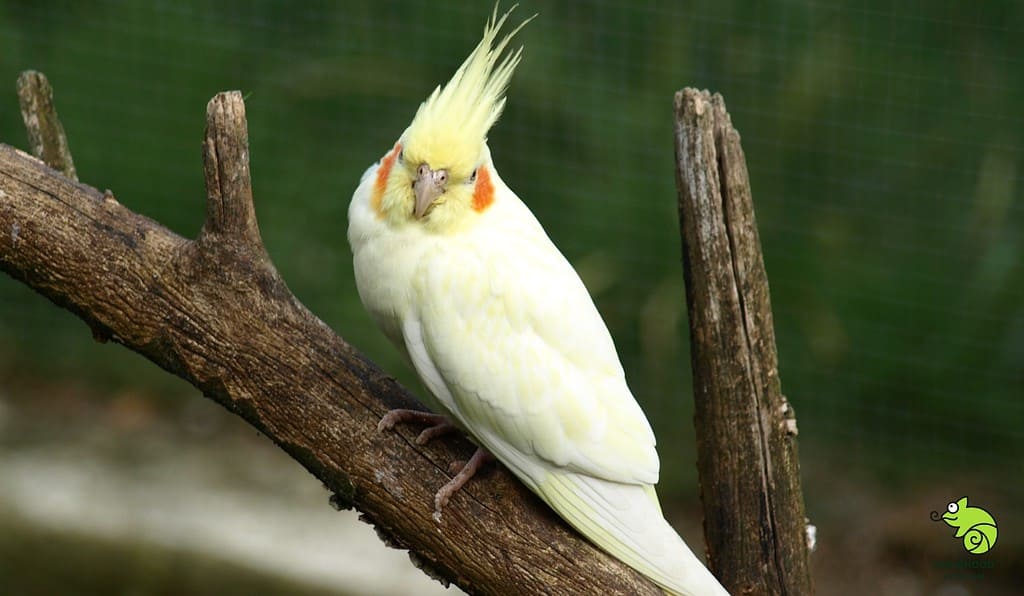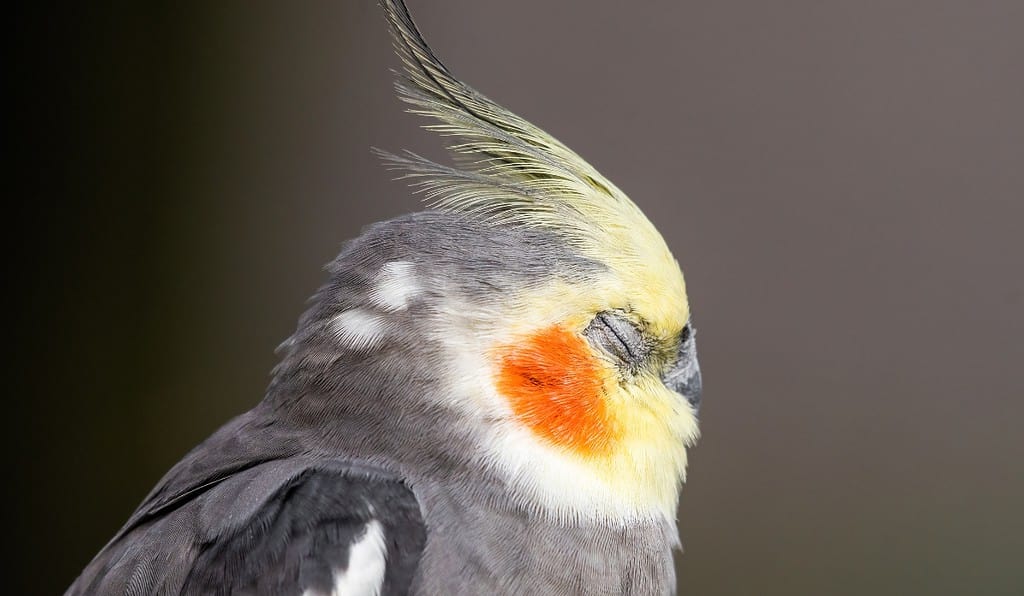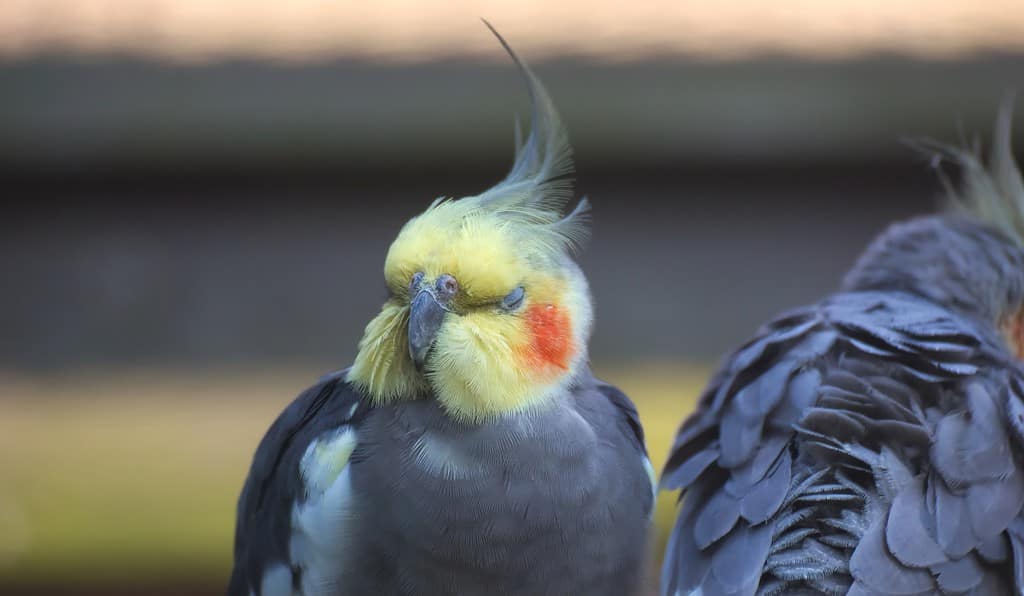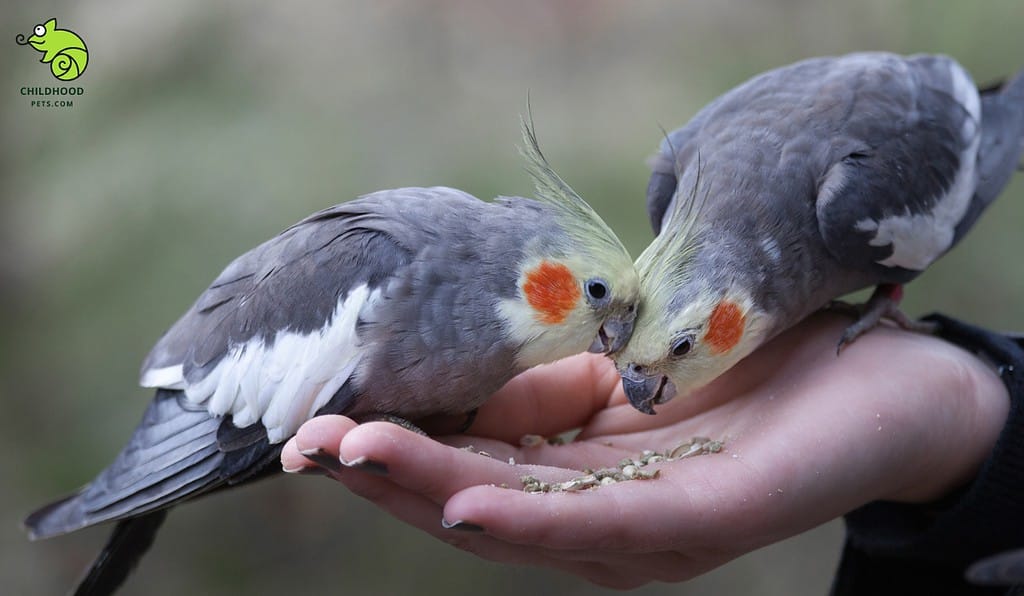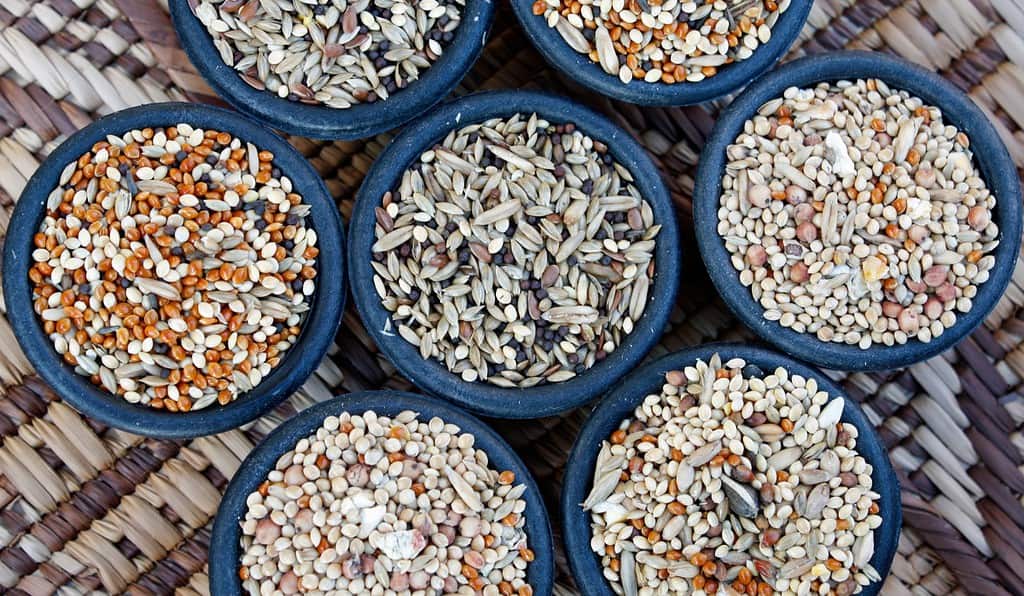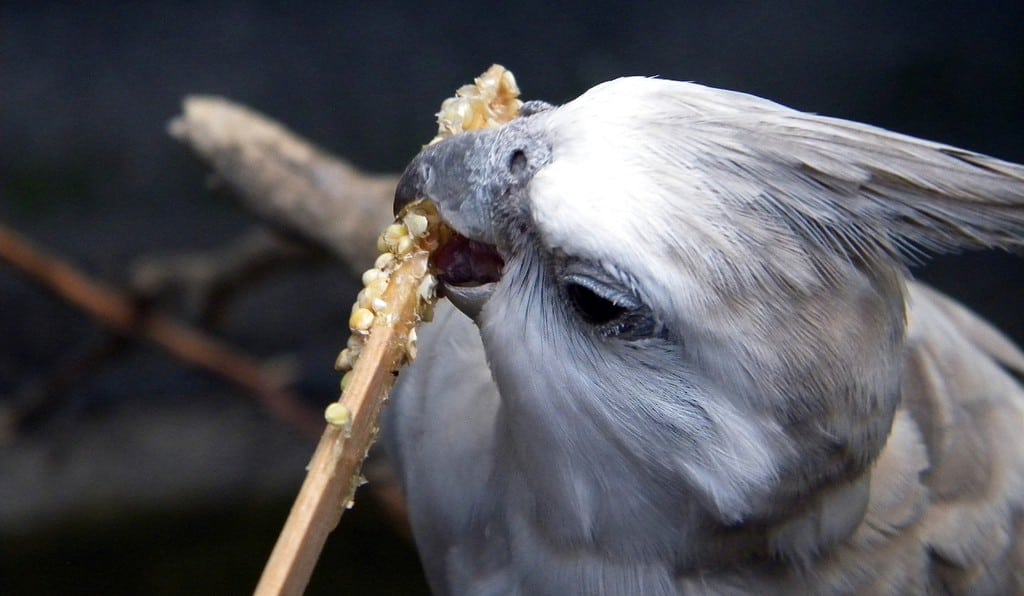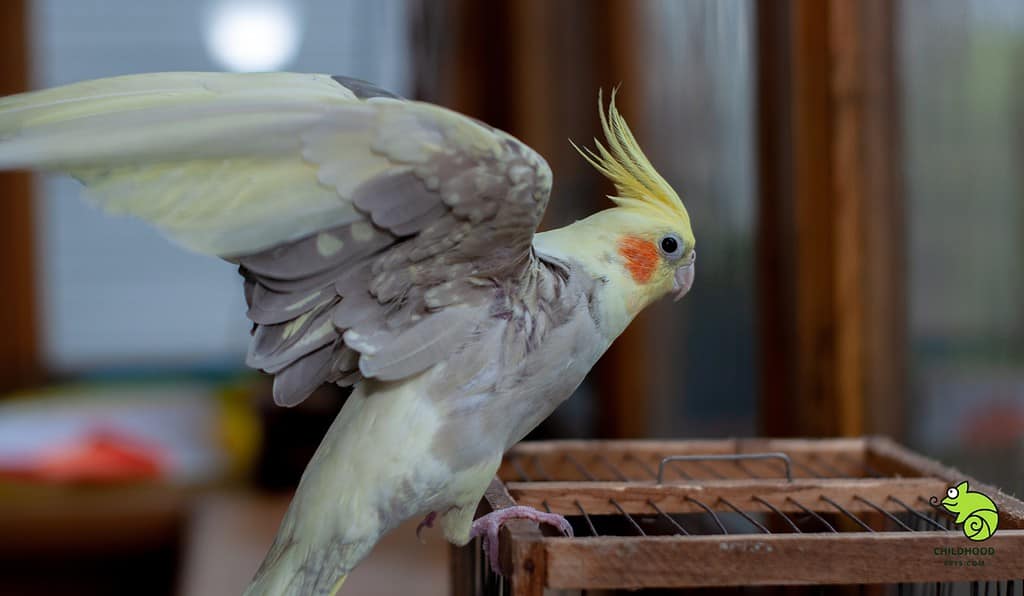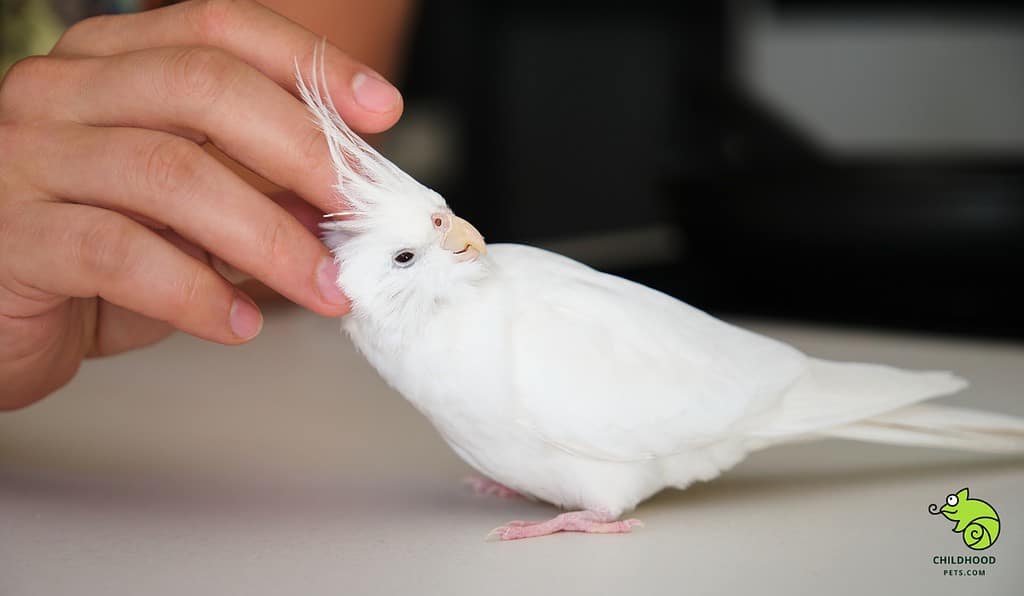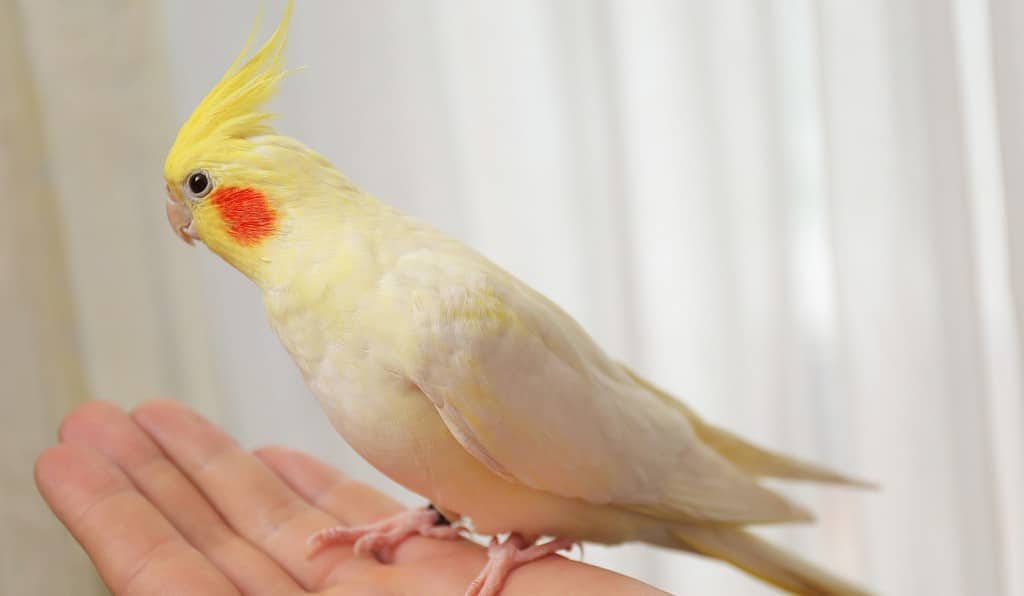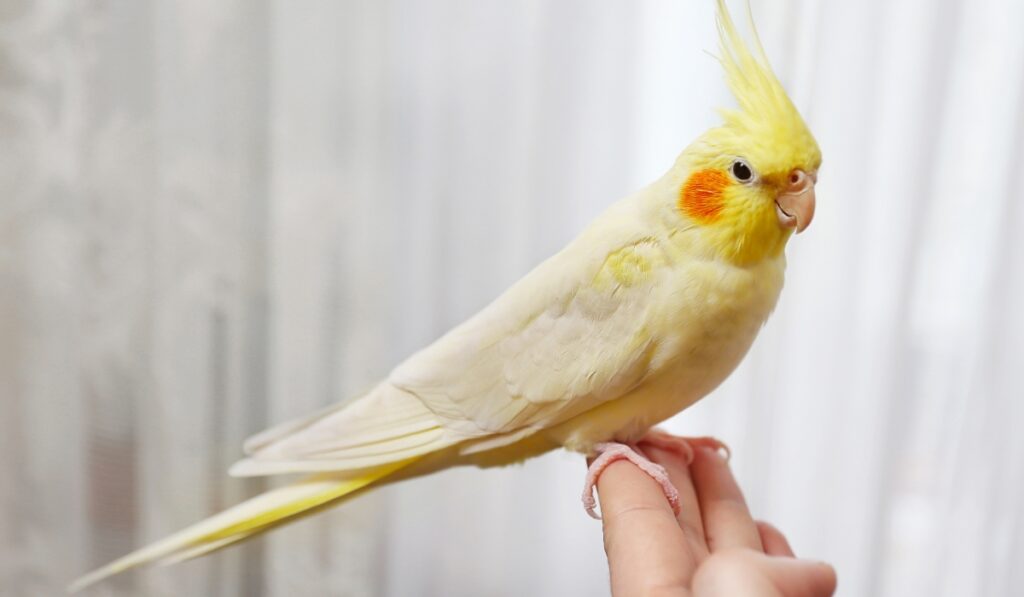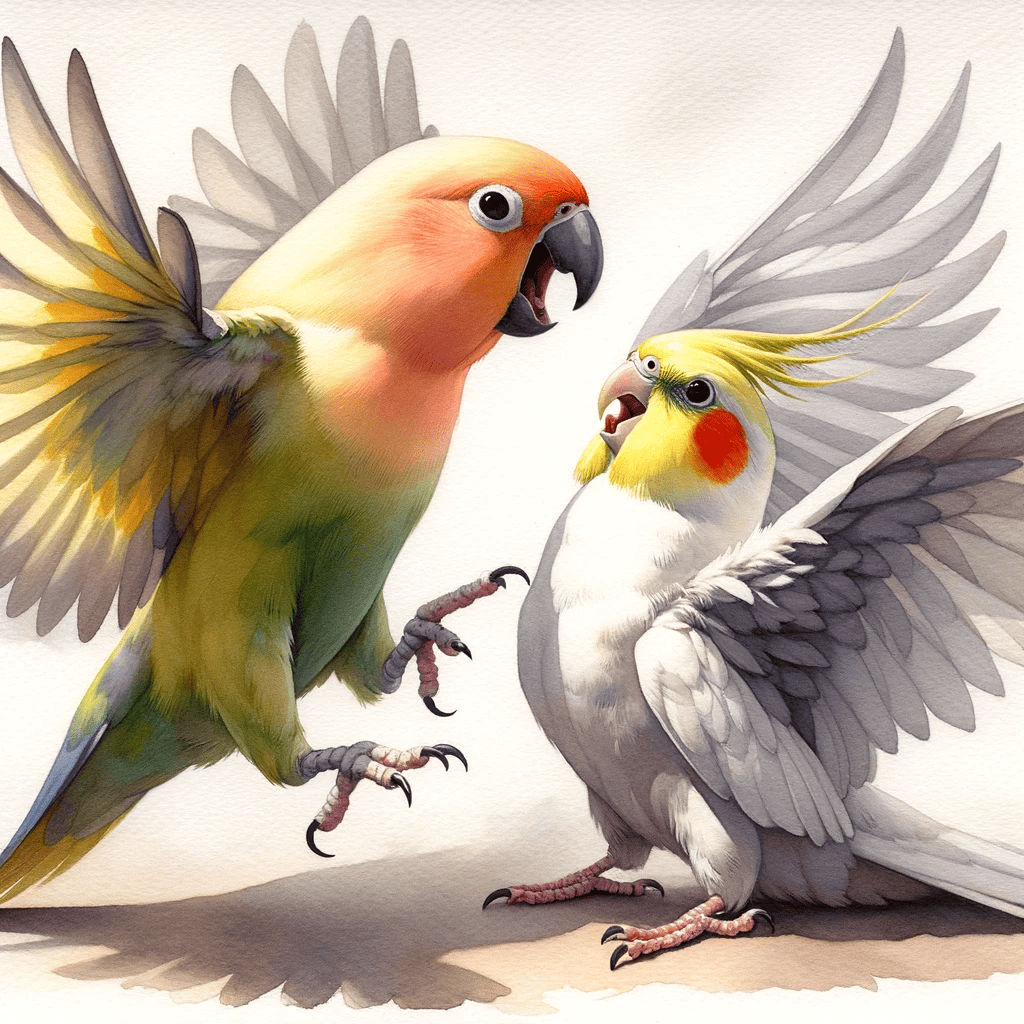
Birds of a feather flock together, right? Well, when it comes to the vibrant world of Lovebirds and the gentle realm of Cockatiels, things aren’t that simple. These two popular pet birds, adored by many for their unique personalities and captivating behaviors, often raise a pressing question among bird enthusiasts: Can they coexist harmoniously in the same environment?
As a general rule, Cockatiels and Lovebirds have distinct temperaments and needs, making it challenging for them to live together peacefully. While Cockatiels are gentle and docile, Lovebirds are active and can be territorial, leading to potential conflicts if housed together.
Curious to dive deeper into their compatibility? Stick around as we explore the intricate dynamics between these two feathered wonders.
Basic Facts About Lovebirds And Cockatiels
The vibrant world of birds! From their mesmerizing colors to their captivating songs, birds have always been a source of joy for many. Today, we’ll dive deep into the world of two popular pet birds: Lovebirds and Cockatiels. Now, if you’re like many bird enthusiasts, you might be wondering if these two can share a cage and live harmoniously. Well, let’s unravel this mystery together.
Both Lovebirds and Cockatiels are adored worldwide for their unique personalities and striking appearances. However, understanding their distinct living environments and temperaments is crucial if you’re considering housing them together. While it’s tempting to imagine these two feathered friends chirping away in harmony, the reality is a tad more complex.
To give you a clearer picture, let’s compare some basic facts about Lovebirds and Cockatiels:
| Feature | Lovebirds | Cockatiels |
| Lifespan | 10-15 years | 10-15 years |
| Size | 5-7 inches (13-18 cm) | 12-13 inches (30-33 cm) |
| Origin | Africa | Australia |
| Temperament | Active, playful, aggressive | Docile, friendly, social |
| Diet | Seeds, fruits, vegetables | Seeds, pellets, fresh foods |
Why Can’t Lovebirds and Cockatiels Live Together?
Now, I’ve been around birds for a good chunk of my life, and I can tell you that while both Lovebirds and Cockatiels are delightful pets, they’re as different as night and day. Here’s why:
- Unique Personalities: Every bird is an individual, but generally speaking, Lovebirds are active, playful, and can be quite territorial. Cockatiels, on the other hand, are more laid-back and tend to be more gentle and docile.
- Distinct Needs: Lovebirds thrive when they get lots of attention. They need a spacious cage to fly around and plenty of perches to hop on. Cockatiels, while also loving attention, are content with more toys and a bit less human interaction.
- Behavioral Differences: If you’ve ever been nipped by a Lovebird, you know they can be feisty! They’re more prone to biting, especially when they feel threatened. Cockatiels, in contrast, are usually more relaxed and less likely to bite.
- Living Environment: Lovebirds are tropical birds that adore a warm, humid environment. They need a cage that’s at least 18 inches by 18 inches, placed in a quiet spot away from direct sunlight or drafts. Cockatiels, being from Australia, are more adaptable but still need a sizable cage with plenty of toys and perches.
- Dietary Needs: While both birds enjoy seeds, fruits, and veggies, their dietary needs differ slightly. Lovebirds, for instance, have a penchant for chewing and shredding paper, especially when it’s damp. Cockatiels, on the other hand, benefit from a specialized pellet diet to ensure they get all the essential nutrients.
Can Lovebirds and Cockatiels Get Along?
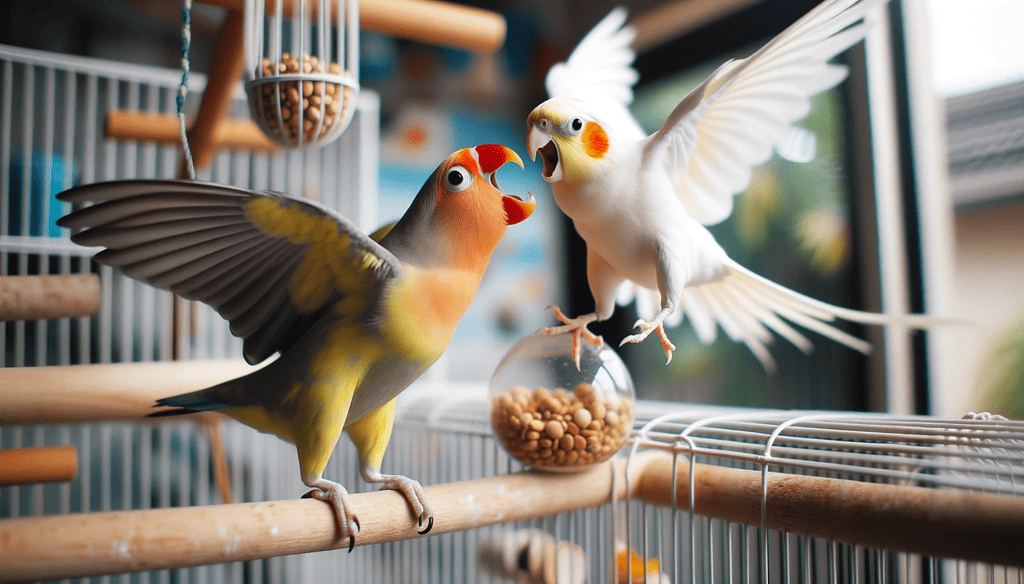
The age-old question of whether Lovebirds and Cockatiels can coexist harmoniously is one I’ve encountered countless times in my years as a veterinarian. While both birds are undeniably charming, their potential for harmony when housed together is a topic of debate. Here’s what you should consider if you’re thinking about this feathery pairing:
- Understand Their Personalities: Lovebirds are active, playful, and can sometimes be territorial. Cockatiels, in contrast, are more docile and tend to be more gentle. Recognizing these differences is the first step.
- Assess Their Needs: Lovebirds crave attention and need a spacious cage with plenty of perches. Cockatiels, while also loving attention, are content with more toys and a bit less human interaction.
- Observe Behavioral Differences: Lovebirds can be feisty and are more prone to biting, especially when they feel threatened. Cockatiels are usually more relaxed.
- Consider Their Origins: Lovebirds hail from tropical regions and thrive in warm, humid environments. Cockatiels are native to Australia and have slightly different environmental needs.
- Seek Expert Advice: Before making any decisions, consult with a veterinarian or bird expert. They can provide insights tailored to your specific situation.
Living Environment
The living environment plays a pivotal role in the well-being of both Lovebirds and Cockatiels. Lovebirds, being the active creatures they are, need ample space to sleep, climb, play, and spread their wings. They thrive in a setting that allows them to explore and fly around. On the flip side, Cockatiels, while also active, require a more intimate space filled with perches and toys to keep them engaged.
Caring for both these birds is not just a commitment of love but also of time and finances. To give you a clearer picture, here’s a comparison of their ideal living environments:
| Feature | Lovebirds | Cockatiels |
| Cage Size | At least 18×18 inches | Tall enough for climbing, not overwhelmingly large |
| Location | Quiet spot, no direct sunlight or drafts | Quiet area, away from direct sunlight and drafts |
| Toys & Perches | Variety of perches, toys, and bird baths | Plenty of toys and perches |
| Dietary Needs | Bird-safe fruits, veggies, and bird food | Fresh seeds, fruits, veggies, and specialized pellets |
| Interaction Requirement | High, with both humans and other Lovebirds | Moderate, with ample out-of-cage playtime |
Which Birds Get Along with Lovebirds?
Lovebirds, with their vibrant personalities and striking colors, are a joy to have around. But if you’re thinking of introducing a new feathered friend to your Lovebird’s environment, it’s essential to tread carefully. Not all birds are compatible with Lovebirds, given their active and sometimes territorial nature. However, there are a few species that can potentially cohabit with them:
- Other Lovebirds: The safest bet is to pair a Lovebird with another of its kind. They are social creatures and often enjoy the company of their own species. However, it’s crucial to monitor their interactions, especially at first, to ensure they get along.
- Budgerigars (Budgies): These small parakeets can sometimes cohabit with Lovebirds, but it’s essential to ensure that both birds have enough space and resources to avoid territorial disputes.
- Canaries: Known for their beautiful songs, Canaries are generally non-aggressive and can potentially share a space with Lovebirds. However, always ensure that the Lovebird doesn’t show aggressive behavior towards the Canary.
- Finches: These tiny birds are active and can be a good match for Lovebirds. However, they should be given ample space to avoid potential conflicts.
- Parrotlets: These are small parrots that share some similarities with Lovebirds in terms of size and behavior. While they can potentially get along, it’s essential to monitor their interactions closely.
While the above list provides potential bird companions for Lovebirds, it’s crucial to remember that every bird is an individual. What works for one pair might not work for another. Always introduce new birds slowly and under supervision. And if you ever notice signs of aggression or stress, it’s best to house the birds separately. Your bird’s safety and well-being should always be the top priority. Remember, it’s always better to be safe than sorry when it comes to the happiness of our feathered friends.
Lovebird Requirements
Lovebirds! These vibrant, tropical wonders are a sight to behold. Originating from warm, humid environments, Lovebirds have specific needs that, when met, ensure they thrive and bring joy to their caregivers. If you’re considering adding a Lovebird to your family or already have one, here’s what you should know:
- Tropical Nature: Lovebirds hail from tropical regions, which means they thrive in warm, humid environments. Ensure their living space mimics this natural habitat.
- Cage Size and Placement: These active birds require a spacious cage, preferably at least 18×18 inches. Place their cage in a quiet spot, away from direct sunlight or drafts.
- Variety is Key: Lovebirds love to play! Equip their cage with a range of perches, toys, and bird baths to keep them engaged and stimulated.
- Dietary Needs: A balanced diet is crucial. Offer them a mix of bird-safe fruits, vegetables, and specialized bird food to ensure they get all the nutrients they need.
- Chewers by Nature: Lovebirds have a penchant for chewing and shredding. Providing them with paper and cardboard (especially if sprayed with a bit of water) can be a delightful activity for them.
- Sleep is Essential: Just like us, Lovebirds need their beauty sleep. Ensure they get around 12 hours of darkness for adequate rest.
What Birds Can Be Kept with Cockatiels?
Cockatiels, with their charming crests and melodious chirps, are a favorite among bird enthusiasts. But if you’re thinking of introducing another feathered friend to your Cockatiel’s environment, it’s essential to choose wisely. Here are some birds that can potentially share a space with Cockatiels:
- Budgerigars (Budgies): These small parakeets can be a good match, given their similar size and temperament. However, always ensure both birds have ample space.
- Canaries: Their melodious songs can be a delightful addition. However, ensure your Cockatiel doesn’t show signs of aggression towards the Canary.
- Finches: These small, active birds can coexist with Cockatiels, but it’s essential to provide them with enough space to avoid potential conflicts.
- Parrotlets: While they share some similarities in size, it’s crucial to monitor their interactions closely.
- Other Cockatiels: Sometimes, the best companion for a Cockatiel is another Cockatiel. They understand each other’s behaviors and can coexist harmoniously.
Remember, every bird is unique. Always introduce new birds slowly and under supervision. If any signs of aggression or stress appear, it’s best to separate them. Your primary goal should always be the well-being and happiness of your feathered friends.
Cockatiel Requirements
Cockatiels, with their iconic crests and gentle nature, are among the most beloved pet birds worldwide. As a veterinarian, I’ve had the pleasure of treating many of these charming birds and guiding their caregivers on best practices. If you’re lucky enough to have a Cockatiel or are considering getting one, here are some essential care tips:
- Spacious Living: Cockatiels need a sizable cage – think of it as their personal apartment. Ensure there’s ample room for them to fly, with plenty of toys and perches to keep them engaged.
- Interaction is Key: These birds thrive on attention. Regular interaction, out-of-cage playtime, and even some gentle chit-chat can make a world of difference to their well-being.
- Balanced Diet: A mix of seeds, fresh fruits, vegetables, and a specialized pellet diet ensures they get all the nutrients they need. Remember, a healthy bird is a happy bird!
- Hydration Matters: Always provide fresh water and make it a habit to change it regularly. Clean water is crucial for their health.
- Stimulate Their Minds: Cockatiels are intelligent birds. Toys, perches, and other objects in their cage can provide the mental stimulation they crave.
- Routine Check-ups: Just like us, regular visits to an avian vet can help catch potential health issues early.
Can Lovebirds Be Paired with Other Birds?
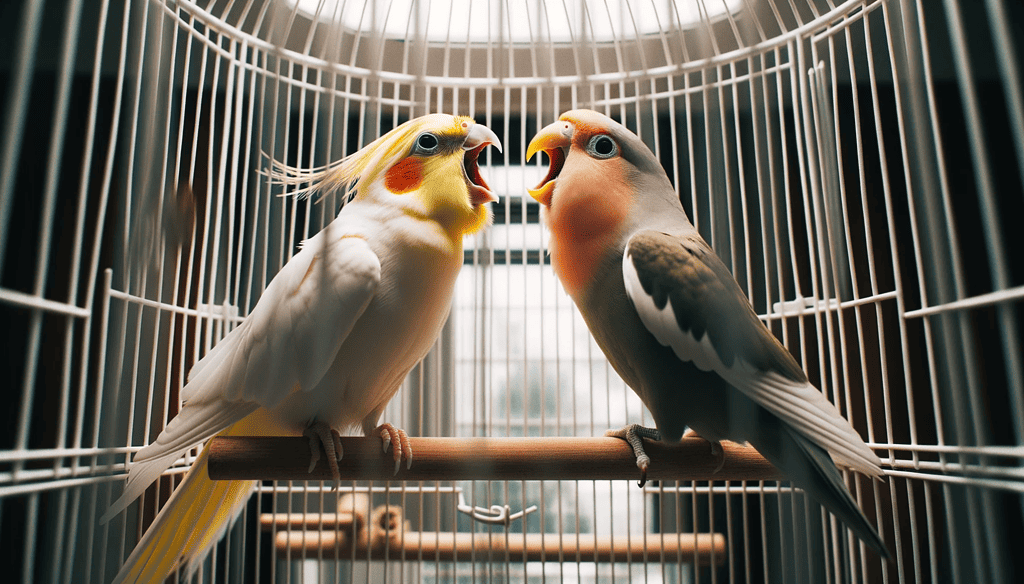
Pairing Lovebirds with other bird species can be a bit of a challenge. Their vibrant personalities and territorial nature mean that not every bird will be a good roommate for them. Let’s explore some potential pairings:
| Bird Species | Pros | Cons |
| Budgerigars | Similar size, can be sociable | Potential for territorial disputes |
| Canaries | Different habitats, less likely to interact | Size difference, potential for bullying |
| Finches | Active, less likely to engage with Lovebirds | Size difference, need separate space |
| Parrotlets | Similar size, both are active | Both can be territorial, close monitoring needed |
| Cockatiels | Gentle nature, less aggressive | Size difference, Lovebirds might dominate |
Remember, while these pairings might work for some, they might not work for all. Always monitor any new introductions closely and ensure each bird has its own space to retreat to.
Temperaments
When it comes to birds, just like humans, each species has its own unique personality traits. Let’s dive into the world of Lovebirds and Cockatiels to understand what makes them tick.
Lovebirds:
- Active and Energetic: These little dynamos are always on the move. Whether they’re exploring their cage, playing with toys, or simply flitting about, they’re a bundle of energy.
- Aggressive and Territorial: Don’t be fooled by their name; Lovebirds can be quite feisty. They’re known to be territorial, especially when it comes to their space or their mate.
- Highly Social: Lovebirds thrive on interaction. Whether it’s with their human companions or fellow Lovebirds, they love to be in the company.
Cockatiels:
- Gentle and Docile: These birds are the epitome of calm. They’re not as hyperactive as Lovebirds and tend to be more laid-back.
- Owner’s Shadow: Cockatiels are known to form strong bonds with their owners. They love to be close, often perching on a shoulder or head, just to be near their favorite human.
- Less Aggressive: While they have their moments, Cockatiels are generally less aggressive than Lovebirds.
Conclusion
It’s clear that housing Lovebirds and Cockatiels together can be a recipe for stress. While Lovebirds are bustling with energy and can be territorial, Cockatiels prefer a more peaceful environment. It’s essential to understand these differences to ensure both birds live harmoniously, whether they’re in the same space or separate cages. Every bird, just like every person, has its own unique needs and personality. By respecting these differences and providing the right environment, you can ensure a happy life for your feathered friends.
If you’ve got any thoughts or experiences to share, drop them in the comments below. And, if you found this article helpful, why not share it with fellow bird enthusiasts?
Frequently Asked Questions
Are lovebirds better than cockatiels?
It’s not about better or worse; it’s about what fits your lifestyle. Lovebirds are active and require more attention, while Cockatiels are gentler and can be more independent.
Are cockatiels or lovebirds more affectionate?
Both birds are affectionate in their own ways. Cockatiels tend to bond closely with their owners, while Lovebirds are social and love interaction.
Do cockatiels need other birds?
Cockatiels are social birds, but they don’t necessarily need another bird companion, especially if they receive ample attention from their human caregivers.
What not to do with a cockatiel?
Avoid exposing them to loud noises, drafts, or sudden temperature changes. Ensure their diet is balanced and avoid feeding them toxic foods like chocolate or avocado.

